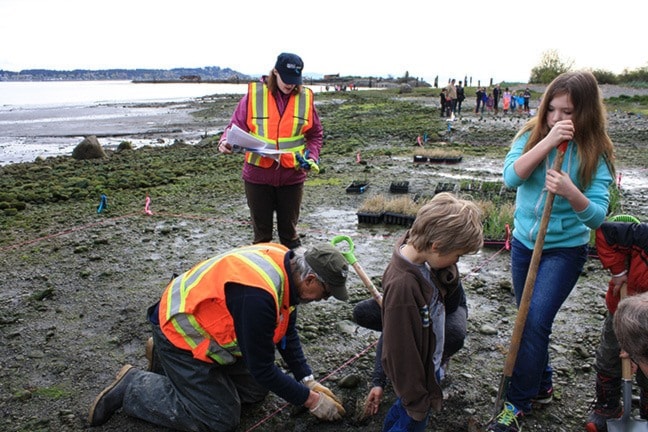Feature by Paul A. Horgen
Special to The Record
Each year, Earth Day – April 22 – marks the anniversary of what many consider the birth of the modern environmental movement. The year was 1970 and the moment where people all over North America honoured the environment by planting trees of all types, this was the first Earth Day.
1970 was at the pinnacle of the hippie and flower-child culture in North America. That year brought the last Beatles' album, and Simon & Garfunkel’s “Bridge Over Troubled Water”. Protest was the order of the day, although saving the planet was not the cause. War raged in Vietnam, and students, especially in the USA, increasingly opposed the war. The word “environment” appeared more often in spelling bees than on the evening news. The times, however, were changing.
In 1970 most Canadians remained oblivious to environmental concerns, however the stage had been set for change by the publication of Rachel Carson’s New York Times bestseller “Silent Spring” in 1962. The book represented a watershed moment for the modern environmental movement. More than any other person, Ms. Carson raised public awareness and concern for living organisms, the environment and public health. Climate change, our biggest current global environmental issue, hardly rated a footnote in the print media of the year.
In 1970, I was involved in the first Earth Day as a graduate student at the State University College of Forestry in New York State. Our Graduate Association decided to plant a plastic tree in protest of the lack of sustainability practices in the forestry industry at that time.
The college administrators of the day took note of our symbolic statement and the college changed its name to the State University of New York, College of Environmental Sciences and Forestry during the following decade. I have had 45 years of Earth Day participations and plenty of time to assess what has, and has not, happened since that first Earth Day.
This April, Project Watershed celebrated Earth Day together with 140 students from Royston Elementary School by planting and restoring salt marsh habitat near the Royston wrecks. In a combined effort with many dedicated volunteers, 4,000 plants, representing seven native species, were planted over a period of three days.
Tanis Gower, the project’s biologist, was impressed with the enthusiasm of the young students. “Having the school children help was so exciting, especially seeing how hard they worked, and how keen they were to learn about the estuary,” she said.
Royston Elementary principal Pelka Wiltshire feels that the estuary is central to the community, and was pleased that students had the opportunity to work with Project Watershed staff and volunteers. Fifteen students from Glacier View School collected donor sedge stock from the Courtenay Marina, which was transported to Royston for planting on the three marsh islands by the children and many Project Watershed volunteers.
Environmental educator Wendy Kotilla brought a senior student to gain leadership skills by instructing the younger students.
The Royston restoration site was a log-dumping, booming and storage area for over 75 years, which caused extensive damage to the estuary and impacted the five species of Pacific salmon once abundant in the estuary. Salt marsh plants and eelgrass form a network of vegetation that is critical for salmon migration.
“The restoration not only helps salmon, it also generates habitat for other wildlife, protects the shoreline from storm surge and wave action, and the plants sequester carbon dioxide from the atmosphere,” said Dan Bowen, project leader for the Royston shoreline efforts.
April 22, 2015 marked the 45th anniversary of Earth Day. Today, Earth Day is about far more than just planting trees.
“In the Comox Valley people are increasingly concerned about the health of our watershed and estuary, so this year, we are planting salt marsh for Earth Day to bring attention to the need for shoreline rehabilitation,” added Bowen. “Estuaries, rivers and wetlands are some of the most threatened ecosystems on the planet.”
The Royston planting project is an example of a collaborative, community effort. Project Watershed looks forward to celebrating Earth Day in the future, perhaps with more exciting projects like the restoration of the Field site in Courtenay, in ways that fulfil the society’s mission to educate, inform and act to protect and restore our precious watersheds and estuary.
Paul Horgen is a retired Professor of Biology from the University of Toronto and current board chair of the Comox Valley Project Watershed Society
